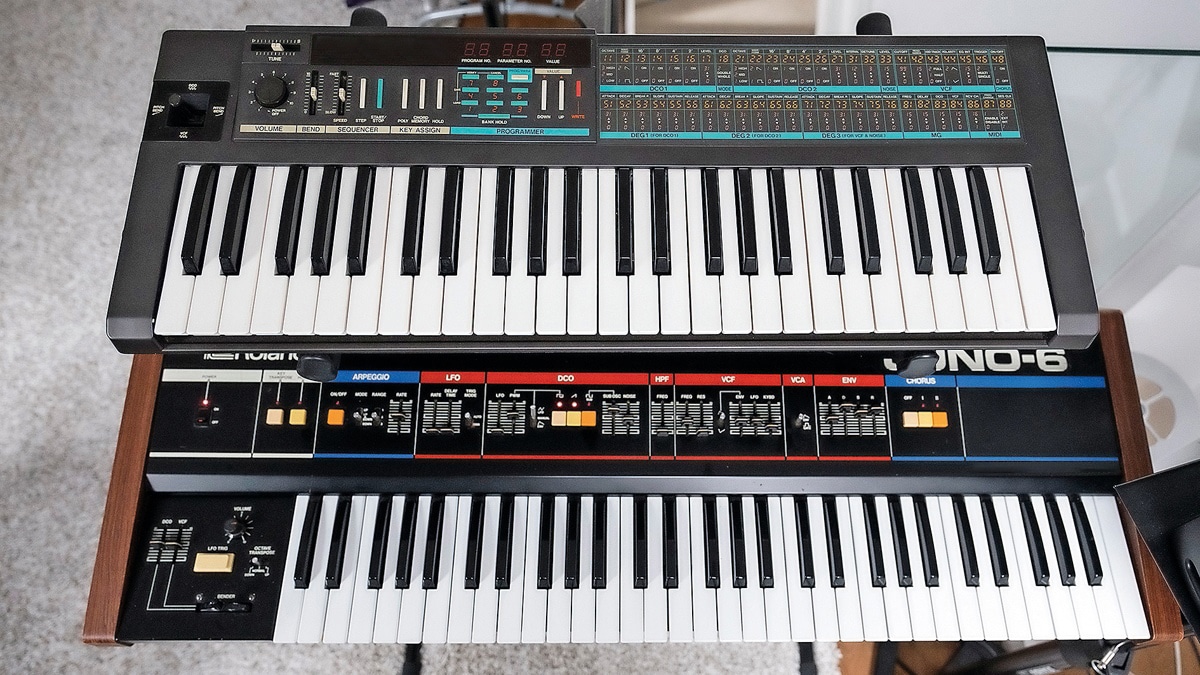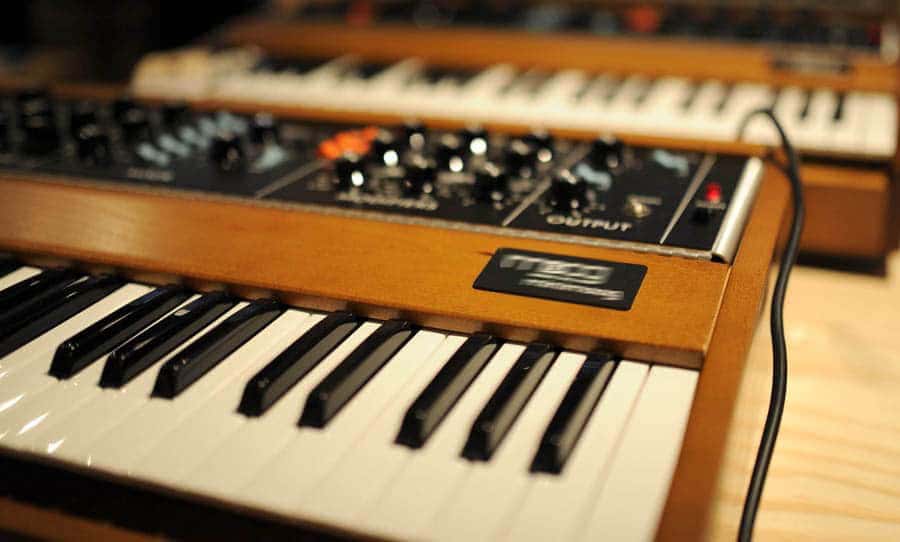
Over time, synthesizers have proven to be a compulsory element in musical instrument collection – it’s a must-have! It’s primarily a music production tool Trusted Source A tribute to the synth: how synthesisers revolutionised modern music | BBC Radio The humble synth has shaped a wide range of musical forms, and has had a massive impact on the worlds of TV and film too. www.bbc.co.uk A fantastic synthesizer gives depth and detail to any music. When played, it can be the central focus, generating melodious hooks that will leave listeners grooving to the good sound, which ultimately sticks in their heads for days.
After deciding to purchase a synthesizer and you are left to choose between monophonic vs. polyphonic synth, arriving at a conclusion could be a little tasking if all the features and benefits are not weighed side-by-side.
However, in this article, we will be helping with that! Monophonic vs. polyphonic synth meaning will be explained in detail to help you with the one to buy; of course, not forgetting the money value.

When electronic synthesis first started, all the synths were the same. They required complicated circuitry as they all relied on an analog electrical signal to generate sound. In these early days synthesizers were called monophonic synths.
A monophonic synth is a type of synthesizer that can only play a note at a time. To make a sound with this kind of synth, you will have to channel each individual’s voice via the signal chain. As a result, it can’t be used on some occasions because it’s hard to fit more than one person’s voice into it.
The perfect description of a monophonic synth is the human voice. The human voice can produce only one note at a time. You can’t sing a chord all by yourself, which is the major reason why the choir is made up of several members and why a lot of bands hire supporting vocalists. A combination of several people and instrument notes produces the melodious texture and rhythm you feel whenever you are listening to music.
Main features of a monophonic synth:
The monophonic synth does not only look like the human voice, which produces only one note at a time. Although it might sound limited, it’s capable of so many things. Because it makes only one sound at a time, all its energy and resources are dedicated to producing it well.
However, we can’t take our eyes off its shortcomings. So shortly, we will be looking at the pros and cons of the monophonic synth.
| Pros | Cons |
|
|

A polyphonic synth is a type of synthesizer that is capable of producing more than one note at the same time. Conventional keyboard instruments are typically completely polyphonic – all the keys on the keyboard can be pressed at the same time, and they will produce different sounds.
Even though Western musical traditions are founded on unity, which requires the ability to play chords Trusted Source Chords - Harmony and tonality | BBC Bitesize Music contains notes in succession (melody) or notes in combination. www.bbc.co.uk , a lot of conventional instruments are monophonic, meaning only one note can be produced at a time. The majority of brass and woodwind instruments fall within this category.
One of the things that makes polyphonic synths stand out is the liberty to play good swell pads. Investing in a synth for pads is your way to incredibly detailed soundscapes.
Main features of a polyphonic synth:
The polyphonic synth does not only produce more than one note at a time. It is also capable of so many things with some shortcomings, if I must say. Shortly, we will be examining the pros and cons of the polyphonic synth.
| Pros | Cons |
|
|

In considering the best monophonic vs. retro polyphonic synth, the differences must be noted. A number of them will be discussed shortly.
One major difference between a monophonic vs. polyphonic retro synth is the number of sounds they produce at a time. A monosynth as the name implies, only produces one note at a time, while a polysynth can produce numerous notes at once.
Many synth users will tell you that the sounds produced by the monophonic synth are very different from the sound created from the polyphonic synth. For example, many keyboardists and brass users believe that the sound produced from a monophonic synth is fuller and stronger than the sound you can get from a polyphonic synth.
It is also believed that the monophonic sound expresses more character and connotation than the polyphonic synth. This notion appears to be supported by a review of various polyphonic instruments, such as the Saxophone.
Although the monophonic instruments can only play one note at a time, the depth of the note produced cannot be matched by any other instrument.
Playing styles is another thing that differentiates a synth analog monophonic vs. polyphonic. How they are played is different – each synthesizer requires a different perspective.
The monophonic synth is built with a complicated circuitry that makes the playing of sounds difficult when compared to a polyphonic synth. To make sound with a monosynth, you would have to channel each person’s voice through the signal chain, allowing you to produce a large tone for each note.
On the other hand, polyphonic instruments can produce numerous notes at once and so must be played with a thinner sound in mind so as not to bombard the listener’s senses or sound messy and dull. The notes played with a polyphonic synth must be in accordance with one another, so much care is taken when playing them.
Polyphonic synths can be used to play chords and a lot of piano-like sounds because they can play numerous notes at once. Legato playing methods are popular with polyphonic synths due to the possibility of notes overlapping. A polysynth, unlike a monosynth, will permit a note to keep on playing until it reaches its optimum number of voices.
Other than the two core differences mentioned above, there are a couple of differences between monosynth and polysynth that will help you decide on the instrument worth buying. See them below.
| Monosynth | Polysynth |
| It produces only one note at a time | It produces two or more notes at a time |
| It cannot serve as the main instrument | It can serve as the main instrument |
| It is hard to channel voices through the signal chain | It is easy to channel voices through the signal chain |
| It is smaller | It is bigger |
| It is very suitable for playing bass | It is very suitable for playing thin sounds |
| Playing swell pads is difficult | It allows you to play fantastic swell pads |
| It does not allow you to play chord | It allows you to play chord |
| It is cheap | It is expensive |
There are a lot of synths on the market from which you can choose. Amongst them is Hamzer 61-Key Portable Electronic Keyboard Piano, which does not just serve your purpose but also helps you sharpen your skills. Also, there is Korg Minilogue 4-Voice Polyphonic Analog Synth, popularly known as the next-generation analog synth for musicians of all types – it fulfills your intentions, helps you find inspiration, and makes you have premium fun.
You should consider other aspects in terms of monophonic vs. polyphonic synth when deciding which sort of synth is best for you.
Starting with the price. Many monophonic instruments are less expensive than polyphonic ones, owing to their considerably internal construction and design. If you are just getting started on investing in synths, you might come across a piece of advice that says polyphonic synths are the best because they allow you to play in mono as well. Of course, that’s true, but you must be willing to pay the price. Polysynths are expensive.
Another thing that determines the one that suits you better among the two synths is your desired playing style and the purpose it will be serving.
Remember that the monophonic synth only produces one note at a time, making it unsuitable as the main instrument. So, if you are planning on getting your first synth, it is advisable that you go for a polysynth, as it will serve a general-purpose.
Also, if you plan to use it in a live band and chords will be important to your sound, you might want to invest in a synth that can play them. You can invest in an FM Synth to help with the texture of your music – it gives it a clean and fresh sound.
As previously stated, the polyphonic synth is easier to operate than the monophonic synth, so it saves you some stress. However, if you are hoping to utilize it mainly as a baseline or lead, a monophonic synth suit you better.
But if all you need is an instrument to supplement a polysynth or you want to explore vintage sounds, a monosynth is the best choice you can make.
If you are not still certain about the synth that best suits your purpose, you can find a way around it by purchasing an ambient music synth that serves various purposes – it is not limited.
Investing in a synth is a vital decision as you must choose a synth that will serve you for a long time. Synths, especially polysynths, are quite expensive, so a mistake must not be made in its selection.
Monophonic vs. polyphonic synth has been dealt with in this article, and a lot has been said on how you can make the best decision that will suit your purpose, be it a specific sound desire, playing style, sharpening of skills, etc.
Ultimately, the decision is yours to make. Whichever one you choose to buy, make sure that it has the attributes of performing your intentions.